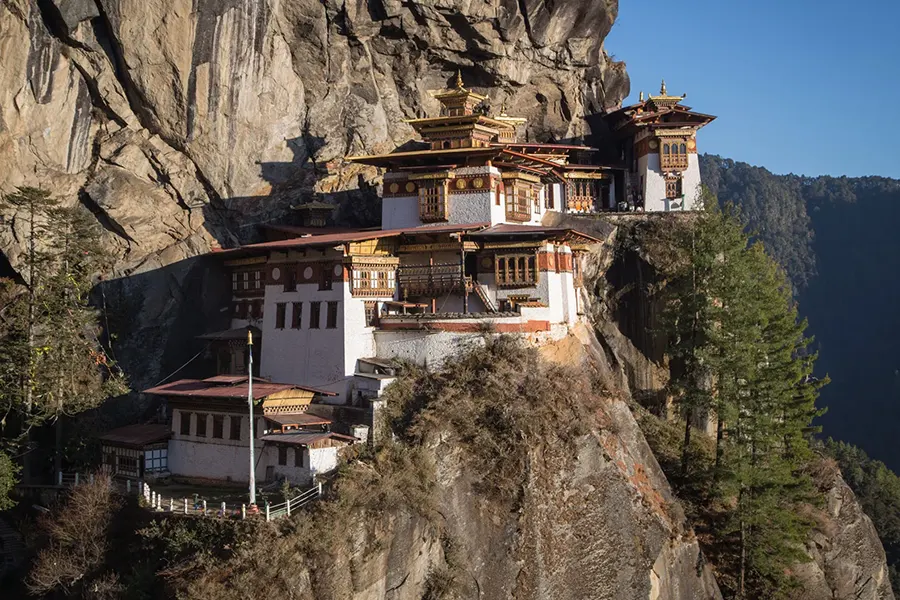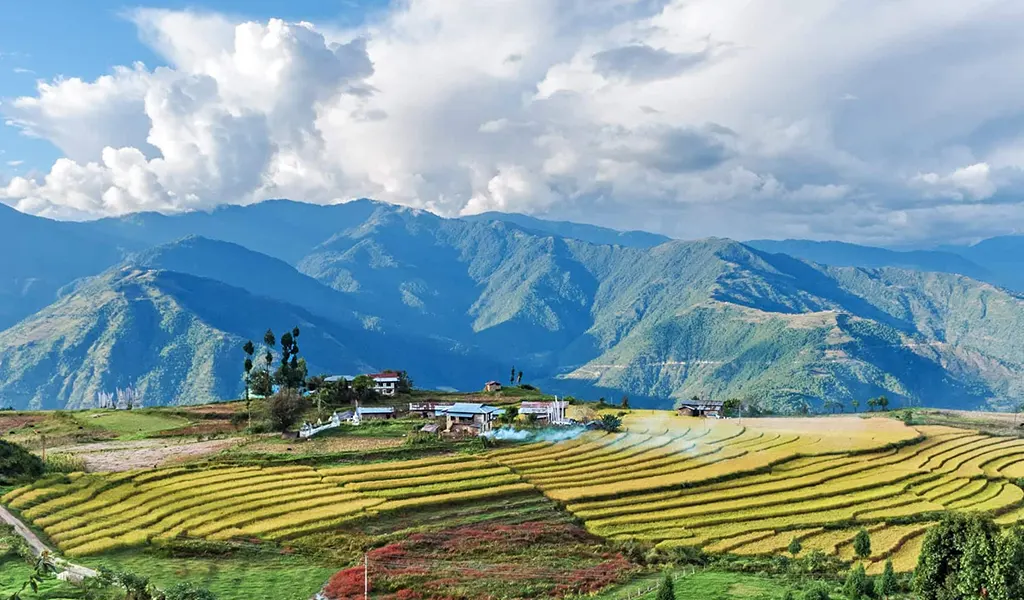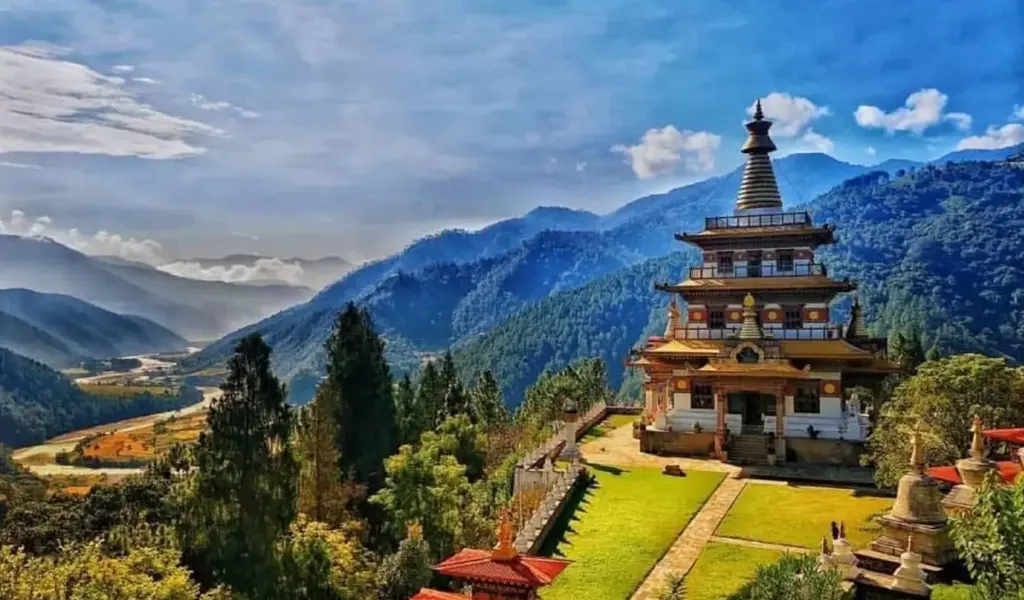Thimphu (2N) – Paro (1N)
Overview
Bhutan, a Buddhist kingdom on the Himalayas’ eastern edge, is known for its monasteries, fortresses (or dzongs) and dramatic landscapes that range from subtropical plains to steep mountains and valleys. In the High Himalayas, peaks such as 7,326m Jomolhari are popular trekking destinations. Paro Taktsang monastery (also known as Tiger’s Nest) clings to cliffs above the forested Paro Valley.
Highlights
- Transfer From Airport To Thumphu Hotel.
- Thimphu Local Sightseeing.
- Transfer From Thimphu To Paro Hotel.
- Paro Local Sightseeing.
- Transfer From Paro Hotel To Airport.
Itinerary
Receive from Paro airport complete your Bhutan immigration formalities & transfer to Thimphu. Check in hotel & Refreshment. Evening free time. Overnight stay at Thimphu.
Morning breakfast at hotel. Proceed to Sightseeing visit National Memorial Chorten, Royal Palace, Bhutan Parliament, Buddha Point, Local Market, Archery Ground, BBS Tower. Evening a stroll in & around The Clock Tower. Overnight stay at Thimphu.
Morning After breakfast Check out from Hotel drive to Paro . Visit Airport View Point . Check in hotel . After lunch visit Paro National Museum , Paro Zong , Wooden Bridge . evening free at Paro town. Overnight stay at Paro.
Morning breakfast at hotel. check out from the hotel, Transfer to Airport. Trip End.
Includes/Excludes
Cost Includes
- 02 Nights hotel accommodations in Thimphu.
- 01 Night hotel accommodations in Paro.
- Meal Breakfast, at hotel.
- Sightseeing as per itinerary
- Private transfer
- All sightseeing & tours by independent & well-maintained Vehicle.
- TCB Approved Guide
- Insurance. (INR 500 Total)
- SDF Fee. (INR 1200 Per day per Person)
Cost Excludes
- Lunch, Dinner
- Air Fare / Train Fare.
- Anything not mentioned in inclusions.
- Personal Expenses.
- 5% GST Application TCS.
- Sightseeing Entrance Fees.
FAQs
Even the most privileged travelers consider Bhutan a special destination. Its secluded location, limited accessibility, and preservation efforts have shielded many from visiting this jewel in the Himalayas. Bhutan only opened its doors to tourism in 1974, with the number for tourists kept to an environmentally manageable level through government regulated tourist tariff. Bhutanese are renowned for their happiness and are a proud people who wear their national costume with pride.
Bhutan is thirty minutes ahead of India.
Our destination specialists will recommend certain travel times after learning more about your preferences. The Bhutan climate is varied and depends on the elevation. The southern areas are more tropical while the Himalayan regions have continual snow. The southwest monsoon is usually from June – September. Also, many travelers visit Bhutan during a specific festival or holiday, when the towns become vibrant stages for music and dance performances.
What do you hope to see and experience during your trip? Our destination specialists will make recommendations based on your travel preferences. Many travelers incorporate Paro, Thimphu, Punakha and Bumthang, though some travel solely for trekking in the Himalayas.
Yes, altitude sickness is common in Bhutan and can affect any traveler, regardless of age, strength, or fitness level. Symptoms include dehydration, fatigue, dizziness, shortness of breath, edema and insomnia. To alleviate the chances of altitude sickness, we recommend limiting alcohol, staying hydrated and planning for rest days in the higher elevations.
English is commonly spoken, as it is the medium of instruction in schools. The national and official language of Bhutan is Dzongkha, a Tibetan dialect spoken mainly by Ngalop in the northern and western parts of the country. Road signs and government documents are written in English and Dzongkha, and the national newspaper is printed in English, Nepali and Dzongkha. In the villages, different ethnic groups speak their own language.





